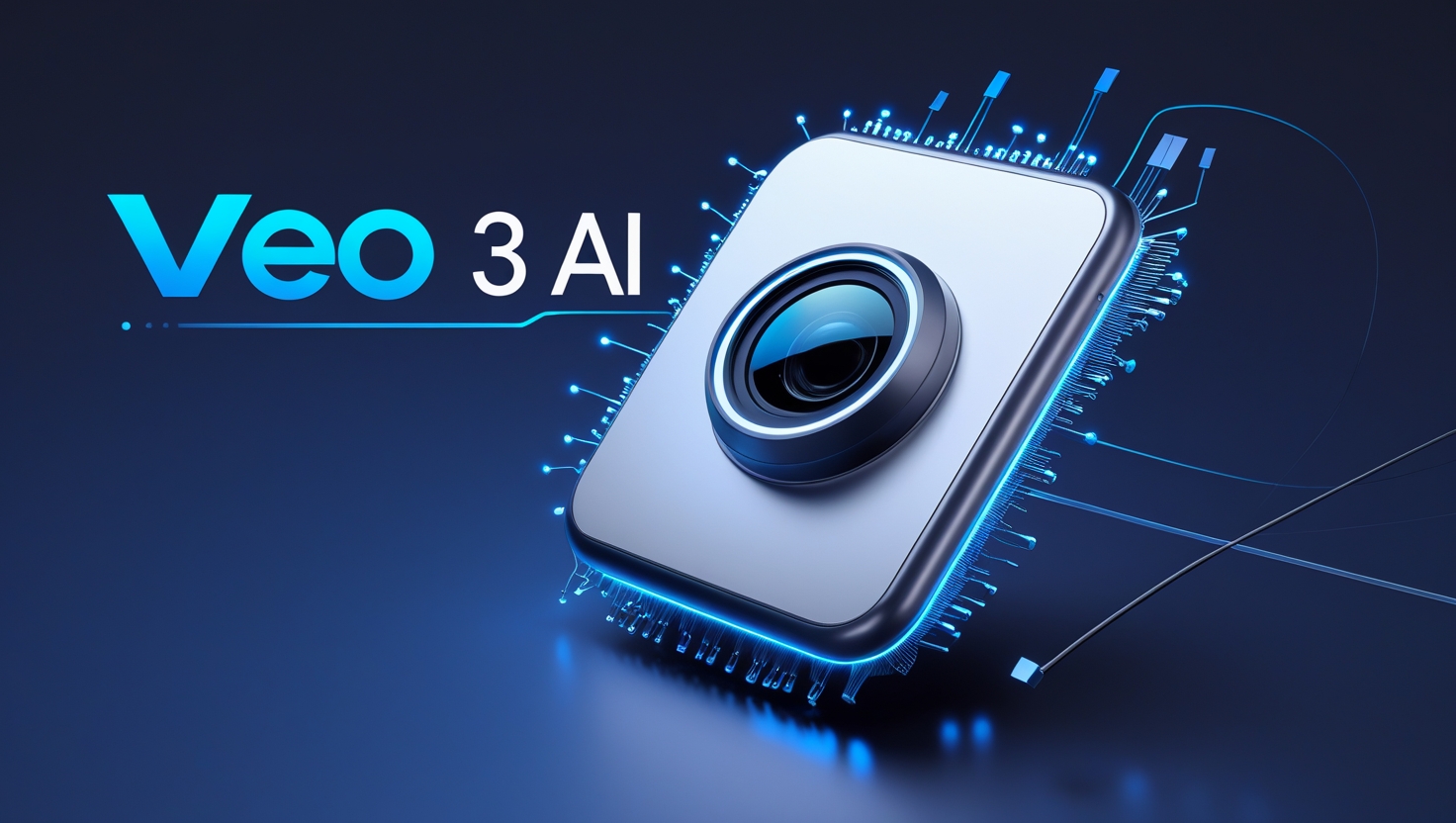In an age where technology continues to redefine the boundaries of human interaction, the emergence of AI Emotion Recognition Technology is paving the way for deeper understanding of our emotional landscape. This groundbreaking field harnesses advanced algorithms and machine learning to decode human feelings with remarkable accuracy, sparking both excitement and ethical debates. By analyzing facial expressions, vocal tones, and even physiological responses, this innovative technology aims to bridge the gap between human emotions and digital comprehension. As we delve into the nuances of AI Emotion Recognition Technology: Understanding Human Feelings, we’ll explore its applications, benefits, and the profound impact it could have on various sectors, from mental health to customer service. The journey into the realm of emotional intelligence is just beginning, and it’s set to alter the dynamics of how we communicate, connect, and understand one another in an increasingly digital world.
Unleashing the Potential of AI in Understanding Human Emotions
Artificial intelligence has made remarkable strides in a variety of fields, and one of the most fascinating applications is in the realm of understanding human emotions. AI Emotion Recognition Technology: Understanding Human Feelings is an emerging field that harnesses the power of algorithms to analyze subtle cues from facial expressions, voice intonations, and even physiological responses. As machines learn to interpret these complex emotional signals, they offer unprecedented insights into the human experience, enhancing our ability to connect, empathize, and communicate.
This technology holds immense potential across multiple domains, from mental health treatment to customer service. In therapeutic settings, AI can provide therapists with valuable data, enabling them to understand patients better and tailor their approaches accordingly. By identifying specific emotional states, AI can assist in creating personalized interventions, thereby enhancing the efficacy of therapeutic practices. In customer service, businesses can leverage AI Emotion Recognition Technology to gauge client satisfaction and emotional responses in real-time, allowing for more effective adjustments in service delivery and fostering a deeper connection with consumers.
Despite these advancements, ethical considerations and challenges must be addressed. The fine line between useful emotional analytics and invasive surveillance needs careful navigation. It is crucial to ensure that AI Emotion Recognition Technology is used in a manner that respects user privacy and autonomy. Further, the risks of misinterpretation and bias in AI systems require ongoing scrutiny and improvement, as erroneous readings could lead to misunderstandings and potentially harmful outcomes. As the technology evolves, fostering an ethical framework will be vital in harnessing its full potential.
Ultimately, the integration of AI in understanding human emotions represents a transformative leap in how we interact with machines and each other. As we refine AI Emotion Recognition Technology: Understanding Human Feelings, we stand on the cusp of an era where technology not only enhances our comprehension of emotions but also enriches our social fabric. By embracing this potential responsibly, we may find new avenues for connection and empathy in an increasingly complex world.
The Science Behind AI Emotion Recognition Technology
AI Emotion Recognition Technology: Understanding Human Feelings is an emerging field that combines psychology, neuroscience, and artificial intelligence to interpret and respond to human emotions. This technology leverages algorithms to analyze various forms of data, including text, facial expressions, and vocal intonations, enabling machines to detect emotional states with remarkable accuracy. By mimicking human emotional recognition capabilities, AI systems can provide insights into the user’s feelings, which has vast implications across sectors such as mental health, customer service, and entertainment.
At the core of AI emotion recognition are complex machine learning models trained on extensive datasets containing emotional markers. These models utilize deep learning techniques to recognize patterns within the data that correlate with particular emotions. For instance, facial recognition algorithms dissect features like micro-expressions and muscle movements to determine whether a person is happy, sad, angry, or surprised. Sound analysis algorithms can dissect tonal variations, pitch, and rhythm to assess emotional states in spoken language. By integrating these methods, AI can offer a more comprehensive understanding of human feelings.
The applications of AI emotion recognition technology are profound and varied. In mental health, for instance, AI tools can assist therapists by providing real-time feedback on a patient’s emotional state, thereby enhancing treatment plans. In customer service, companies can employ this technology to better understand client emotions, allowing for a more tailored and positive interaction. Furthermore, in the realm of entertainment, developers can create adaptive gaming experiences that respond to players’ emotional feedback, making gameplay more immersive and engaging.
Despite its potential, the use of AI emotion recognition technology does raise ethical considerations. Concerns around privacy, consent, and the potential for biased interpretations of emotions must be addressed to ensure responsible usage. As the technology continues to evolve, it is essential for developers to navigate these challenges carefully, promoting transparency and prioritizing user trust. By doing so, society can fully harness the transformative power of AI emotion recognition technology while maintaining respect for individual rights and experiences.
How AI Can Help Us Better Understand Human Feelings

In today’s rapidly evolving technological landscape, the intersection of artificial intelligence and psychology is opening new avenues for understanding human emotions. One of the most promising developments in this area is AI Emotion Recognition Technology: Understanding Human Feelings. This technology leverages machine learning algorithms to analyze various data inputs, such as facial expressions, vocal tones, and even physiological responses, to gauge emotional states. As a result, it paints a clearer picture of how humans feel, allowing for deeper insights that were once elusive.
The implications of AI Emotion Recognition extend far beyond traditional psychological research. For businesses, understanding human feelings can revolutionize customer service and marketing strategies. By interpreting customer emotions in real-time, companies can tailor their approaches based on emotional feedback, fostering a more personalized and satisfactory experience. Similarly, in mental health care, therapists can utilize this technology to monitor patients’ emotional states more effectively, guiding treatment plans based on accurate, data-driven insights. This creates an opportunity for a more nuanced approach to emotional well-being.
Moreover, as we become increasingly aware of the complexity and variability of human emotions, AI systems can help uncover patterns that may not be immediately apparent. This facilitates a richer understanding of emotional responses across different demographics and cultures. By analyzing large datasets, AI can identify subtle nuances in emotional expression that may inform better communication strategies, promote empathy, and ultimately enhance social interactions. Such advancements can lead to a more emotionally intelligent society, where our ability to understand and respond to the feelings of others becomes more sophisticated.
While there are ethical considerations surrounding AI Emotion Recognition Technology, such as privacy concerns and potential misinterpretations of emotional data, the potential benefits are significant. As we navigate these complexities, the synergy between AI and emotional intelligence could prove to be a transformative force in various aspects of life, from interpersonal relationships to digital interactions. By harnessing the power of AI to better understand human feelings, we take a significant step toward a future where technology and empathy coexist, enhancing our collective emotional well-being.
Exploring the Impact of AI Emotion Recognition on Emotional Intelligence
In today’s rapidly advancing technological landscape, AI emotion recognition technology is making significant strides in understanding human feelings. This innovative field utilizes algorithms to analyze facial expressions, voice tone, and physiological signals, providing insights into people’s emotional states. While this technology offers powerful tools for various applications—from enhancing customer service in businesses to improving mental health diagnostics—it’s essential to understand how these developments influence human emotional intelligence (EI).
Emotional intelligence, the capacity to recognize, understand, and manage our own emotions while also recognizing and influencing the emotions of others, plays a critical role in interpersonal communications and relationships. The integration of AI emotion recognition in daily interactions might lead to an increase in emotional awareness, enabling people to become more attuned to their feelings and those of others. This exposure could foster an environment where emotional intelligence is improved collectively, as individuals learn to interpret emotional cues more effectively—both through technology and in personal interactions.
However, there are also concerns regarding over-reliance on AI for emotional interpretation. While AI can analyze data effectively, it may lack the nuanced understanding that comes from human experiences. Emotional responses can be complex and sometimes contradictory, shaped by cultural contexts and individual histories that an algorithm might not fully grasp. As we navigate this technological landscape, it becomes crucial to balance the benefits of AI emotion recognition technology with the innate human ability to empathize and connect emotionally in ways that machines cannot replicate.
Ultimately, the emergence of AI in understanding emotions raises significant questions about the future of emotional intelligence. As we embrace these advancements, it is vital to cultivate an awareness that complements technological understanding with human insights, ensuring that our relationships and emotional connections remain authentic and deeply felt. The intersection of AI and emotional intelligence could lead to enriched communication and empathy, but only if we choose to integrate these tools thoughtfully into our lives.
Unraveling the Complexities of Human Emotions with AI Technology
In an age where technology increasingly permeates our daily lives, the development of AI Emotion Recognition Technology has emerged as a groundbreaking advancement in understanding human feelings. This technology employs sophisticated algorithms to analyze various forms of data—such as facial expressions, voice inflections, and even physiological signals—to interpret emotional states. By harnessing the power of machine learning and psychological theories, AI offers a lens through which we can better comprehend not only our own emotions but also those of others around us.
The implications of AI Emotion Recognition Technology extend beyond mere curiosity about emotions; they touch various sectors, including healthcare, customer service, and mental health. In clinical environments, AI can assist healthcare professionals in identifying patients’ emotional conditions, allowing for timely interventions and better-tailored treatment plans. In customer service, businesses can leverage the technology to gauge client satisfaction or frustration, refining their approach to improve overall experiences. By providing real-time feedback on emotional responses, AI enables a deeper, more human-centric interaction, something that has traditionally been anchored in subjective interpretation.
However, the adoption of AI in deciphering human emotions poses ethical questions that need careful consideration. The nuances of human emotion are incredibly complex, shaped by personal experiences, cultural backgrounds, and social contexts. AI systems, despite their advancements, operate on patterns and probabilities, which may not fully capture the subtleties inherent in emotional expression. Furthermore, concerns about data privacy and consent in the surveillance of emotional indicators cannot be overstated. As we delve deeper into the realm of AI and emotions, it is imperative to strike a balance between technological innovation and the ethical treatment of emotional data.
As we continue to explore the intersection of AI and emotional intelligence, we stand at the precipice of potentially redefining how we understand and engage with one another. By pushing the boundaries of AI Emotion Recognition Technology: Understanding Human Feelings, we are not just accumulating data; we are laying the groundwork for a future where technology augments our comprehension of emotional landscapes. With thoughtful implementation and a focus on ethical standards, AI has the potential to enhance our emotional intelligence, fostering empathy and connection in an increasingly digital world.
Enhancing Empathy Through AI Emotion Recognition
In an increasingly interconnected world, understanding and responding to human emotions has become more important than ever. One of the most promising advancements in this domain is AI emotion recognition technology: understanding human feelings. By utilizing sophisticated algorithms and machine learning techniques, this technology can analyze facial expressions, vocal tone, and even physiological signals to gauge emotional states. As we integrate this innovative technology into various aspects of life, it holds the potential to transform how we interact with one another, fostering deeper empathy and connection.
Empathy is a fundamental human trait that allows us to share in the experiences of others. However, the nuances of emotional expression can often be subtle and easily misinterpreted. This is where AI emotion recognition comes into play, offering valuable insights into the emotional landscape of the people around us. By enabling us to better recognize and understand these feelings, AI can help bridge communication gaps and enhance interpersonal interactions. Imagine a workplace where team members are attuned to each other’s emotional states, leading to a more supportive and collaborative environment.
The applications of AI emotion recognition technology extend beyond personal relationships and workplace dynamics. In healthcare, for instance, it can significantly improve patient care by helping medical professionals identify emotional distress that might not be verbally communicated. In educational settings, teachers armed with insights from this technology can better support students experiencing anxiety or frustration, creating a more inclusive and understanding atmosphere. By integrating this technology into different sectors, we pave the way for a more empathetic society.
As AI emotion recognition continues to evolve, it also raises important ethical considerations. The potential for misuse or misinterpretation of emotional data is a crucial concern that must be navigated thoughtfully. Nevertheless, when implemented responsibly, this technology can be a powerful tool in enhancing empathy among individuals, helping us to forge stronger connections in a world that often feels increasingly detached. By truly understanding human feelings, we can foster environments of compassion and support, making way for a brighter future grounded in empathy.
Practical Applications of AI Emotion Recognition in Various Industries
AI Emotion Recognition Technology: Understanding Human Feelings has been gaining traction in various industries, allowing businesses to tap into the emotional responses of their customers and employees. This technology utilizes advanced algorithms and machine learning models to analyze facial expressions, voice intonations, and even biometric signals. By interpreting these emotional cues, organizations can enhance user experiences, improve customer service, and foster healthier work environments.
In the retail sector, for instance, AI emotion recognition can significantly reshape customer interactions. Retailers are beginning to deploy emotion detection systems in their physical and online stores to better understand shopper sentiments. By analyzing customers’ reactions to products or marketing campaigns, businesses can tailor their strategies more effectively. For example, if the system detects a positive emotional reaction to a specific display or advertisement, the retailer can boost its visibility or create similar promotions, ultimately driving sales and customer loyalty.
The healthcare industry is another domain where this technology is making a difference. Emotion recognition can assist medical professionals in monitoring patients’ mental states, particularly in cases involving mental health. By recognizing signs of distress or discomfort, healthcare providers can offer timely interventions or adjust treatment plans accordingly. Moreover, for caregivers interacting with individuals requiring special attention, such as those with Alzheimer’s disease or autism, understanding emotional cues can lead to more effective communication and support.
Furthermore, in the realm of education, AI emotion recognition is being harnessed to enhance learning experiences. Educators can gain insights into how students are engaging with the material, identifying when they are confused, bored, or interested. This feedback allows for more personalized approaches to teaching, fostering a supportive environment where students can thrive. As AI emotion recognition continues to evolve, its practical applications across various sectors will likely expand, driving innovations that bridge the gap between technology and our innate human emotions.
Overcoming Challenges in Implementing AI Emotion Recognition Technology
The emergence of AI Emotion Recognition Technology has paved the way for innovative applications across various fields, such as mental health, customer service, and entertainment. However, the implementation of this technology is not without its challenges. One major hurdle is the complexity of human emotions, which are diverse and often context-dependent. Unlike straightforward data points, emotions can be influenced by culture, personal experiences, and situational factors, making it difficult for AI systems to achieve an accurate understanding. For researchers and developers, this means navigating a maze of variables to ensure that their algorithms can reliably interpret the nuanced spectrum of human feelings.
Another significant challenge lies in the ethical implications and privacy concerns surrounding the use of AI Emotion Recognition Technology. As organizations increasingly depend on these tools to glean insights from individuals’ emotional states, questions arise about consent and data protection. Users may be hesitant to embrace such technology if they feel their emotional data is being collected without transparency or oversight. This calls for a proactive approach to establish ethical guidelines and ensure that users are informed about how their emotional data will be utilized. Striking a balance between technology advancement and ethical responsibility is essential for fostering trust among users and stakeholders.
Additionally, AI Emotion Recognition Technology faces practical implementation issues, such as varying degrees of accessibility and integration into existing systems. Many businesses may not have the technological infrastructure or resources required to adopt these advanced tools seamlessly. Without adequate training and support, organizations might struggle to interpret the data collected effectively, leading to misinterpretations and potential backlash from customers or clients. Therefore, providing education and resources will be vital to empower teams to leverage these technologies effectively and responsibly, ensuring that they can maximize the benefits of understanding human feelings through AI.
In summary, while AI Emotion Recognition Technology: Understanding Human Feelings holds immense potential, overcoming these challenges is crucial for its successful implementation. It requires collaboration between technologists, ethicists, and end-users to develop solutions that navigate the complexity of human emotions while safeguarding user privacy and fostering accessibility. As the technology continues to evolve, addressing these challenges will pave the way for its transformative impact on how we understand and respond to human emotions in an increasingly digital world.
The Future of Understanding Human Emotions with AI Innovation
As we stand on the threshold of a technological revolution, AI emotion recognition technology is paving the way for a deeper understanding of human feelings. This innovative field combines machine learning, psychology, and neuroscience to interpret the complex tapestry of emotions that govern human interaction. By analyzing facial expressions, vocal tones, and even body language, AI systems are becoming increasingly adept at determining emotional states, providing insights that were once only accessible through personal connections or clinical evaluation. The implications for various sectors, including mental health, customer service, and education, are vast and exciting.
Moreover, the collaboration between AI systems and human insight is reaching new heights. In the realm of mental health, for instance, AI-driven applications can assist therapists in recognizing subtle shifts in a patient’s emotions that may signal underlying issues. These tools can foster more authentic therapeutic relationships, offering practitioners a richer understanding of their clients’ emotional landscapes. As AI emotion recognition technology evolves, it holds the potential to provide real-time feedback, giving people a clearer picture of their emotional well-being and aiding them in navigating complex feelings more effectively.
Education, another critical sphere, stands to benefit immensely from these advancements. Teachers equipped with AI emotion recognition tools can gauge the emotional responses of students in real-time, adjusting their pedagogy to ensure optimal engagement and support. This personalized approach could bridge gaps in learning, especially for those who may struggle to express their emotions verbally. As educators harness the power of AI to foster emotional intelligence, students may find themselves better prepared for collaborative environments and social interactions.
Ultimately, the future of understanding human emotions through AI technology is promising. While we tread carefully around ethical considerations and the importance of human empathy, the potential for improved communication and emotional literacy is significant. The fusion of AI emotion recognition technology with the human experience could lead to a more empathetic society, where the nuances of our feelings are understood and valued, helping us forge deeper connections with one another in an increasingly digital world.
Ethical Considerations in AI Emotion Recognition Technology
As AI Emotion Recognition Technology continues to advance, it raises significant ethical considerations that society must address. This technology, which utilizes complex algorithms and machine learning to analyze facial expressions, vocal tones, and even physiological responses to interpret human emotions, holds promise for various applications, including customer service, mental health assessments, and even security systems. However, the reliance on such technology to decode the nuances of human feelings poses a significant risk of oversimplification and misinterpretation. Understanding human feelings is not merely a matter of data points; it involves a layered context that AI may struggle to adequately grasp, leading to potential misunderstandings or misuse.
Privacy concerns are at the forefront of ethical discussions surrounding AI Emotion Recognition Technology. The ability to analyze emotional states in real-time raises questions about consent and surveillance. Individuals may be unaware that their emotions are being monitored and analyzed, creating an invasive environment where personal feelings are commodified without explicit permission. This situation highlights the need for clear regulations and ethical guidelines that prioritize individual autonomy and establish boundaries around the use of such technology.
Another pressing ethical consideration is the potential for bias within AI systems. Machine learning algorithms are often only as good as the data on which they are trained. If the datasets lack diversity, the technology may not accurately recognize emotions across different cultures or social contexts, reinforcing stereotypes and deepening societal divides. Thus, it is crucial for developers to engage in inclusive practices that ensure their systems are fair and equitable, effectively capturing the wide spectrum of human emotions without bias.
As society grapples with the implications of AI Emotion Recognition Technology, stakeholders—including technologists, ethicists, and policymakers—must collaborate to create frameworks that protect individuals’ rights while harnessing the benefits of this innovative tool. Balancing the potential advantages of understanding human feelings with the ethical implications of privacy, bias, and misinterpretation is essential for fostering a responsible approach to AI that respects human dignity and fosters trust in technology. Ni










One thought on “How AI Emotion Recognition Technology: Decoding Human Feelings ?”